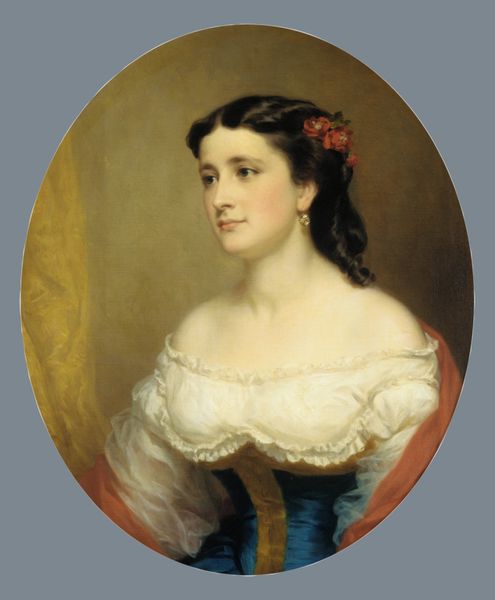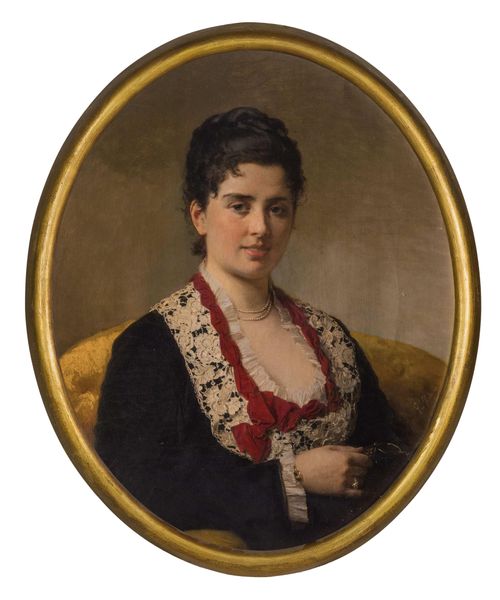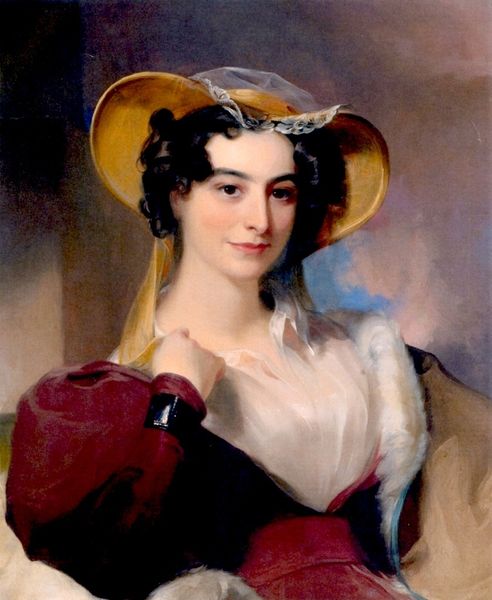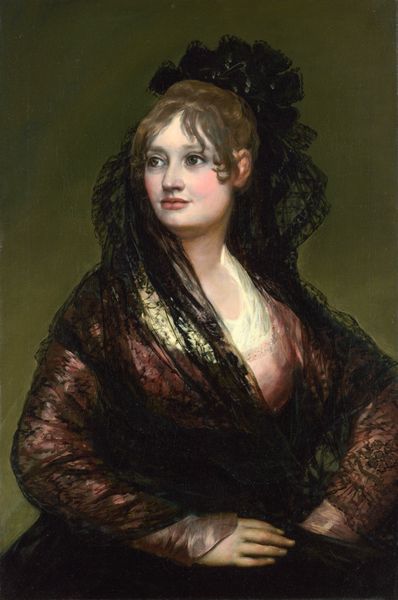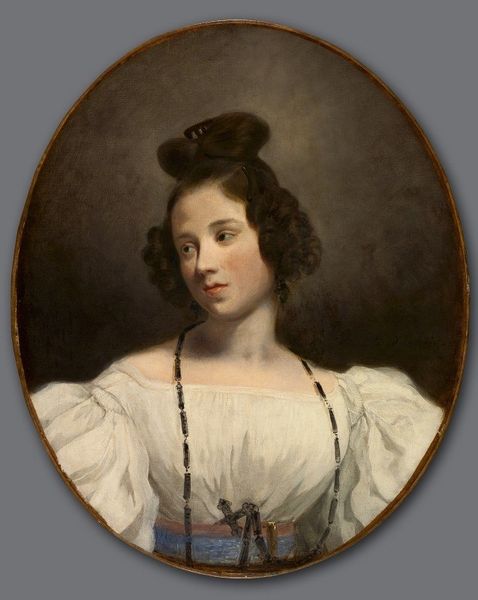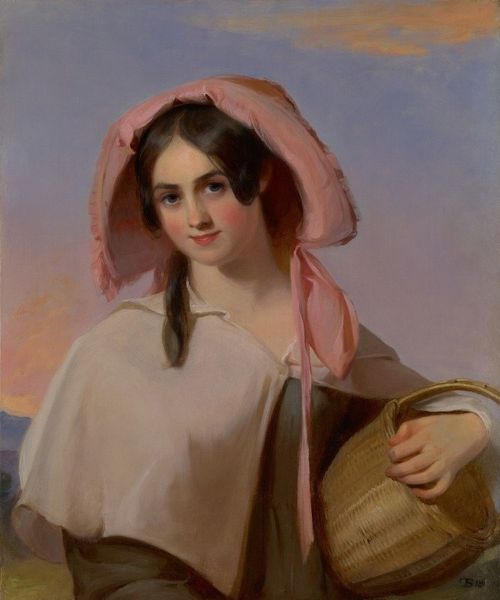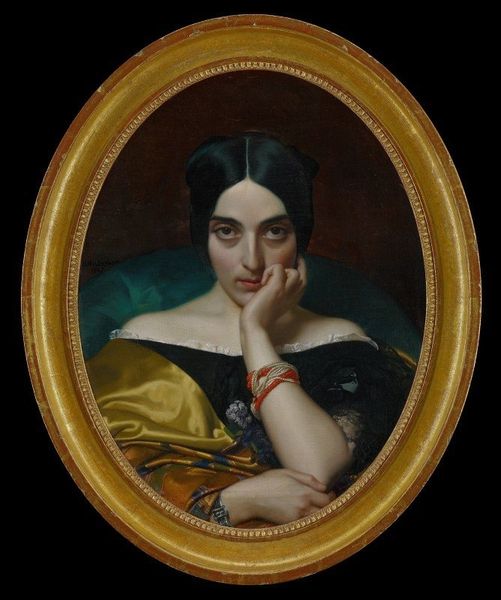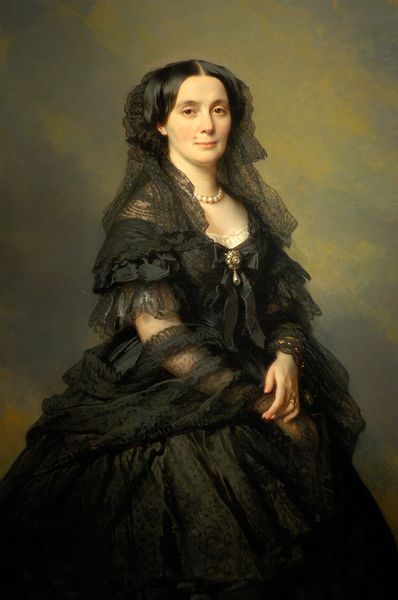
painting, oil-paint
#
portrait
#
painting
#
oil-paint
#
figuration
#
romanticism
#
history-painting
#
portrait art
#
realism
Copyright: Public domain
Curator: Here we see what’s known as the "Portrait of a lady with roses in her hair", and that lady, we believe, is Countess Pushkina, as rendered in oil on canvas. Editor: My initial reaction? Serene melancholy. That soft, pearly light really makes the satins shimmer. It's an interesting composition, oval-shaped which I feel contains and softens the image all at once. Curator: Indeed. Winterhalter’s style reflects the romanticist and realist aesthetics merging in the nineteenth century. Observe the tactile richness in her silk dress, trimmed with delicate lace. The manufacture and trade of these materials was flourishing during this era, speaking volumes about status and global networks of exchange. Editor: Exactly, those details elevate what could be a straightforward portrait into something quite luxurious. And it brings attention to what these dresses really were - not just expressions of individual beauty, but markers of social identity. What story does it tell of the textile industries that clothed the Countess? I also notice that landscape peeking through the curtains— hinting, perhaps, at the Countess' connection to her estate or wider world? It provides context for her presence, almost staging her. Curator: Certainly. Winterhalter’s meticulous technique is fascinating— look closely and consider the division of labor in his workshop: from grinding pigments to preparing canvases, and the way these artistic production methods reflect the increasingly specialized nature of industrial society. The roses, though a classical symbol, might indicate seasonality, referencing the cycles of production within a vast agricultural economy. Editor: That makes sense... it all boils down to how she exists, a result of so many factors at play in her particular time and place. Beyond economics and material culture, I still keep coming back to her gaze - an almost-wistful expression. Her delicate placement of a gloved hand is, like, “Touch me not!”, but it is this tiny element that communicates how, for some, identity becomes a crafted, constructed narrative for public consumption. The portrait is, really, performance in paint. Curator: It is indeed a crafted representation of self and circumstance. Editor: In short: This is about how the woman and the world surrounding her have converged into one gorgeous artifact of her existence, painted carefully by Winterhalter!
Comments
No comments
Be the first to comment and join the conversation on the ultimate creative platform.
